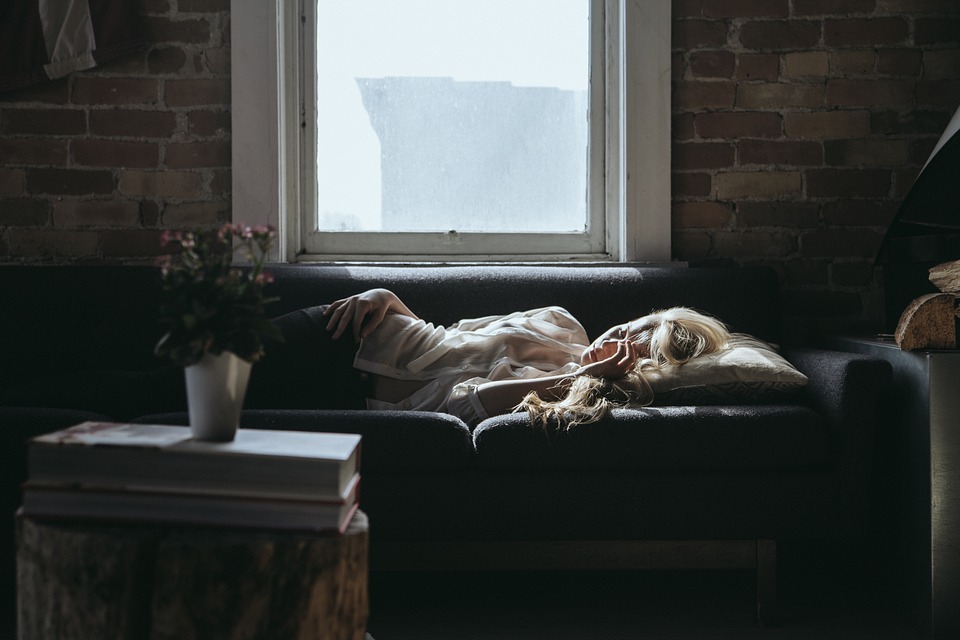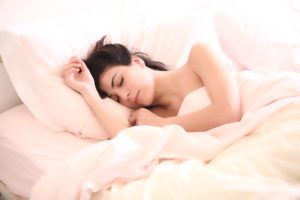Category: news
What is microsleeping? Many individuals often undergo a situation that tends to fly under the radar or remains unrecognized. It’s quite fascinating that a large number of people are not aware that this condition can … Read more
What is microsleeping?
Many individuals often undergo a situation that tends to fly under the radar or remains unrecognized. It’s quite fascinating that a large number of people are not aware that this condition can be addressed. Known as microsleep, this situation involves short, sudden periods of sleep that take place during the day, even when the individual seems to be awake. For effective sleep, the brain needs to shut down and rest. However, in the case of microsleep, the brain momentarily ceases to function. While your eyes might stay open, you become unaware of and unable to interact with your environment because your brain has entered a sleep state. Daytime sleep episodes can be brought on by several factors, with lack of sleep being the main reason. Sleep deprivation usually results from building up a sleep deficit, where not getting enough night sleep leads to a shortfall. This accruing sleep debt then causes sleep deprivation, which significantly contributes to why people might experience these involuntary sleep episodes during the daytime.
Micro sleeping has no warnings; normally you will just experience signs and symptoms. Most episodes are between one second and 30 seconds long. Sometimes, they might extend to a minute or so. To some people, these sleeping episodes are more like light sleeping sessions but they have not qualified to be naps. The major reason why you can’t relate to the physical environment when having the episodes is that the brain is already asleep or shut down and so it cannot process things. You are probably wondering what might bring about the episodes. Insomnia and long naps have been shown to be responsible for this condition. Some key facts to remember include:
- This is a condition that is experienced by many people, especially those with sleep disorders. In most cases, patients experiencing sleep disorders rarely get enough sleep. Some even have difficulties falling asleep. Having adequate quality sleep has more benefits to your body than you could imagine. Sometimes, sleeping disorders are caused by poor sleeping habits. However, these habits can be changed and you will continue having a good night’s sleep. When you have insomnia, for example, it means that you will experience sleep deprivation and this will lead to sleep debt. It is not good to have sleep debts because your body will not function accordingly. So, the best way to handle all this is by ensuring you get a permanent solution to your sleeping disorder.
- Naps have health benefits to the body. What you should always remember is that naps shouldn’t belong. They should be timed and short. Limit your naps to 30 minutes at most. In most cases, if you have longer naps, they interfere with your sleeping schedule. If you love your day-to-day program, then you will understand the essence of being focused on your activities. Long naps also make it hard for an individual to sleep at night. This means that you will sleep late but probably wake up early. That will mean that you have a sleeping debt that needs to be settled. Therefore, you are likely to experience micro sleeping when you least expect it.
Common signs associated with sleeping episodes
The truth is that prevention is better than cure. The only way to protect yourself from a certain condition is if you know the warning signs and symptoms. Just like any disorder experienced by human beings, there are signs and symptoms that will indicate you are experiencing micro sleeping. Below are major symptoms that you need to be on the lookout for:
- If you work in any establishment, you need enough rest. If you don’t get the required rest, you will have trouble staying awake during the day. The reality is that some occupations are generally hectic and tiring. However, after a good night’s rest, you should feel better. Whenever you notice you are feeling sleepy when at work, then it means you are about to experience several sleeping episodes and these can be dangerous in some occupations. It could also be an indication if you find yourself jerking awake when working or losing a few minutes of time when you space out. Such episodes can result in accidents in machine-related occupations.
- If you are a driver and notice that you can’t stick to your lane when driving because of sleep, then chances are you are having a micro sleeping disorder. This can be dangerous because it can result in fatal accidents. Whenever you are driving and you notice you didn’t notice the traffic lights go green or red because your eyes were closed or you zoned out, then it also means you might be experiencing sleep episodes. Driving is an activity that requires a lot of attention and so you need to fully concentrate. Whenever you notice you have no attention or focus because you are dosing off, then it means you are experiencing microsleep.
- Yawning is a condition that most times expresses boredom or exhaustion. Whenever you notice you are yawning a lot then it means that you are tired and your body requires rest. The best way of resting is having good sleep. If you are not hungry or bored, then yawning might indicate readiness to go to bed. If you find yourself yawning before you shut down, you might be suffering from microsleeping.
- How many times have you had a teacher complain that a certain student is absent-minded? How many times have you heard someone ask the other what they do at night when others are asleep? Most people sleep at night so that they can wake up the next day ready to live another day. This might be difficult in some situations because you are absent-minded. Being absent-minded is a condition where the mind has no concentration on what you are doing. This is because the mind might be sleeping or is generally tuned into other issues. It is also called daydreaming. When this happens, an individual can stare at the something for a long time without blinking or recognizing its presence. This is a sign that you are experiencing micro sleeping during the day.
- It is normal for you to react differently to different situations. This might not be possible when an individual is experiencing sleeping episodes. You will not be able to respond accordingly to the environment because you are there in your physical state but your mind receptors are probably idle or they have shut down. When the brain receptors aren’t as active, then it means you will take time to notice what is happening within your environment. If you notice this sign, then it means that you might be experiencing microsleeping.
Things you need to do in order to prevent microsleeping from interfering with your day-to-day activities
Everyone has something they do during the day, whether it is a job or school or even just staying at home and being a caregiver. In order to get through this activities, you need to be focused and be able to concentrate. However, there are certain things that interfere with your performance. Sleep is among the things that will disrupt your day and sometimes, it can determine the outcome in terms of output. When you have had a good rest, you will be in a better position to deliver good results unlike when you have had little or no sleep. Below are some of the things you should do to avoid micro sleeping:
- Sleep has been known to cure stress and also other health conditions. As a driver, you need to have proper sleep before commencing any journey whether the journey is short or long. Research has indicated that sleep deprivation is one of the major factors that have led to an increase in road accidents. Assuming you are going on a road trip with friends or even a relative or even if it is a job, you need to have enough sleep so that you can have proper attention and focus while driving. If you don’t have proper sleep, then you will experience microsleeping which will mess around with your concentration and attention when you are driving. This is dangerous because it can lead to fatal accidents which will, in turn, lead to deaths. It will be hard to live with the fact that you could have avoided the whole accident if only you chose to have enough sleep. Don’t put yourself in such a position.
- The other thing you need to consider when driving is to have a co-driver. Having a co-driver is helpful because he or she can drive when you start experiencing warning signs of micro sleeping. If you have never driven before, you may not understand how tiring driving can get. The second driver is also there to guide you and keep you engaged so that you don’t experience any sleeping episodes while driving. You can even plan the journey in such a way that you both take turns driving. It will give you time to rest and be rejuvenated.
- The other thing you need to keep in mind is how focused you are at any given time. Some activities can’t be done when you are not attentive. When you are at work and you realize your mind is going astray and you cannot operate any machinery well, take a break. You would rather take a walk to become awake again or splash some cold water on your face to become alert. If you can, go and take a short nap and come back when you feel better. Don’t ignore the signs that your body is fatigued as you could hurt someone or even yourself.
- If you are a student, there are various things you can do so as to avoid sleeping episodes in class. First and foremost, always interact with your fellow students or even your teacher. This way, you will save yourself from sleeping in class when the teacher is teaching. Actively participating during the class will mean you are concentrating and this will result in better grades and results in your exams and assignments. You will also have a better understanding of what is being taught. If the teacher is not around, you can try simple activities like spinning your pen so that you don’t send your mind on holiday yet you need it in class.
- If you are keen enough, you will notice that school learning programs have breaks and even occupations have broken. The breaks are there to remove the boredom and at the same time, help you rejuvenate your body system. During the breaks, you can engage in activities that stimulate your mind or allow you to rest. If you are feeling sleepy during the breaks, you can walk around and have something light to eat. You go back to class or with better concentration and attentiveness. If it is in a work environment, you have lunch breaks that allow you to stretch and come back refreshed. Afterward, you will be ready to offer better and high-quality services in production. Experiencing sleeping episodes can mess up your work. For instance, if you are an accountant, you have no room for errors because you were absent-minded. The reality is that one mistake can cost the company millions. Therefore, take breaks to rejuvenate.
- The other thing you need to be careful about is what you eat. Don’t just eat anything because it is food or because you are hungry. You might have heard that people tend to sleep a lot at school or work after lunch breaks. This is because they tend to consume heavy meals that take the body ages to digest. As such, the body tends to divert most its blood supply to the digestive system. The mind also slows down and you start feeling sleepy. To avoid this, eat healthy light meals that will give you a big energy boost and also keep your brain active. This way, you will be able to stay awake even after lunch. You will end up having a highly productive day.
Sleep deprivation
This is a condition that is brought about the accumulation of sleep due to inadequate sleep at night. All in all, the major and most effective way of curing this condition is by ensuring you pay off your sleeping debt. This is done by getting enough sleep.
Major facts you need to know about sleeping deprivation.
- Sleep deprivation plays a major role in how you function during the day. The reality is that you need a lot of focus during the day depending on what you do. Different occupations have different demands. If you are a manual worker, you are sometimes required to attend to different shifts. This means that you might have to take the night shift at times. Whether you are working during the day or night, you still need good rest so that you can function well. Always try and have a proper sleeping schedule, whether you are sleeping during the day or at night. Don’t overstrain your body because it will try compensating by undergoing microsleeping. This can be dangerous if you operate any machinery. You could also lose your job or get suspended from school.
- Another factor you need to remember is that sleep deprivation leads to accidents. You should avoid working or operating anything when sleepy or drowsy. This is an early signal that you are having sleep debts. Sleep debts can be dangerous when they accumulate as they can lead to microsleeping. If you work in a factory that deals with manufacturing, you need to be attentive or else you will have accidents that will involve the machines. The accidents may lead to electrical problems or even lead to the damaging of goods. Another area where accidents happen is when you are driving. It is not safe to drive when you are having sleep episodes during that time. You might miss the traffic lights and this might result in accidents. Sometimes, you might even find it difficult sticking to your own lane when driving. This means that you might push another vehicle out of the road or you might drive yourself into a ditch. So, it has been proven that sleep deprivation results in various types of accidents.
- The other thing you need to know is that when sleep accumulates, it creates a sleep debt. A sleep debt needs to be paid at some point. If not, you will always have it difficult staying up during the day. You may find yourself sleeping at any given opportunity. You need to be smart and ensure that you pay sleep debts in time. You can visit a doctor who will give you numerous ways of ensuring that you don’t have sleep deprivation. They can also help you come up with a sleep schedule that does not lead to accumulated sleep debts. If you are having trouble paying off your sleep debts, the doctor can also prescribe some medication to help you relax and sleep.
- The other thing you need to know about sleep deprivation is that affects all age brackets. However, it is proven that children are at a higher risk of experiencing sleep deprivation because of many reasons. The reasons include stress and also staying up playing games on their gadgets. This is will, in turn, reduce the amount of sleep they get before going to school. The games keep their brains engaged and so they fall asleep very late at night. This will, in turn, lower productivity in school and affect their grades.
Natural methods that will help you cure your sleep deprivation and sleep debt
The reality is that you sometimes give the body less rest and this is what is called sleep deprivation. Some will argue that they don’t deny the body the required amount of sleep because they want to. Instead, they will blame it on their occupations. Some people will carry their assignments or work home and work on it first before they go to sleep. This will affect the time you sleep. In addition, this will in one way or the other affect your internal clock. Sometimes, your boss will give you a deadline on a certain report and this will mean that you work late and deny your body the required sleep. This will also have an effect on your sleeping schedule. So in one way or the other, you will have experience sleep deprivation which will lead to sleep debt. The sleep debt is just basically the accumulation of sleep. So, how will you pay this sleep debt? Below are simple ways you can do so and regain your normal sleep schedule;
- The only way you can pay a sleep debt is by ensuring you sleep more. When you sleep more, your body gets enough rest. You need not forget that the reason why you are having sleep debt is that you have accumulated sleep. So, when you have free time or when you leave work early, you can always ensure that you go to bed early in order to have enough sleep. The other way you can ensure you sleep more is by freeing your weekends. This is one way of having free time to yourself to relax. You can use this time to catch up on the much-needed sleep and pay your sleeping debt. You will be able to start the week on a new page.
- Sometimes, you might not have enough time to sleep probably because you have a lot of things you need to do. So, you will only have enough time to take naps. Naps are healthy depending on how long they last. You need to ensure that your naps don’t take that long because they will also alter your internal clock and you will find it hard to sleep at night. This will be creating another problem. Time your naps to be thirty minutes or less.
Things you can do at home to help you avoid having sleep episodes during the day
Sleep episodes during the day that are short are referred to as micro sleeping. They are episodes that can be avoided. Below are natural methods that can help you do so:
- As an individual, if you have enough sleep, then chances are you will have better performance the following day. Having enough sleep means that you kick out any chances of suffering from insomnia or any other sleeping disorders. Any sleeping disorder will result in you having sleeping episodes during the day. Therefore, if you deal with your sleeping disorders in order to get enough sleep, you will avoid micro sleeping.
- The other thing you can do when you notice you are having warning signs of micro sleep is to involve yourself in some exercises. These exercises include walking around or even riding a bicycle. These activities can return your mind back to focus on what you were doing before. It will be harder to fall sleep in that case.
- Another thing you need to know is that it is very hard to have sleep episodes when you are looking at bright light. The light in your environment can be set to influence your sleep. If you want to stay awake, choose a brightly lit room. Your eyes will be forced to adjust and will send a signal to your brain to stay awake.
- The other thing you need to understand is that it is very hard to experience microsleep when you are in a noisy place. Your eardrums will collect the sound and send it to your brain receptors. Your mind will focus on where you are and you will be able to concentrate on the task at hand. Therefore, if you feel yourself getting tired, you can put on some upbeat music for a while before getting back to the task at hand.
- It is difficult to experience sleep episodes at some temperatures. Extremely cold temperatures will not promote sleep. Instead, your body will be working tirelessly to maintain your normal temperature. Therefore, if you feel like you are getting sleepy, you can turn down the temperature for a few minutes before turning it back up.
- Sometimes, it is all about what you want. If you have a reason why you are engaged in a certain activity, then you will be focused and you will achieve what you want. Always ensure that you develop an interest in everything you do. Interest will help you avoid sleep episodes as you perform your daily activities. In addition, when you are motivated to achieve something, you will do it to the best of your ability. This means that despite exhaustion, you will be willing to see it to completion. You will not be able to rest until the task is accomplished.
Major tips you should consider using to help your sleep-deprived teenagers
Teenagers experience a lot of sleep episodes during their daily activities. However, this condition can be changed if you helped them in the following ways:
- Always ensure that you are aware of what screen is on in the house. Some teenagers enjoy watching television in the bedroom. The question should be when they switch it off. You need to make sure that all screens are off when it is time to sleep. This will mean that they have more time to sleep, which is great for their wellbeing. Sleep has been proven to improve memory. So, enough sleep is not only necessary to solve sleep deprivation but also help them with their memory in school and at home.
- The other thing you need to be careful about is the beverages they are drinking before going to bed. Any beverage that has caffeine shouldn’t be taken when it is almost bedtime. Caffeine will stimulate the body and this will mean that the teenagers have less time sleeping. When that happens, they have sleep deprivation, which will actually result in sleep debts. A sleep debt isn’t healthy for anyone because it will lead to less focus and lack of concentration.
- Your body has an internal clock that helps it perform its daily activities. This internal clock is something that is found in everyone and determines being awake and asleep. You need to train teenagers on how they can set their sleeping schedules. The only way they can achieve this is by having a routine whereby they go to bed early and wake up at a certain time. This will train their bodies to function on a certain number of hours of sleep. It will increase productivity.
- Your body functions well under certain temperatures. It is hard to sleep when the temperatures are very high or when they are very low. So, the best thing is to ensure that the room temperatures of your sons’ and daughters’ rooms are right and that anyone can sleep in them. The only way you can cure sleep deprivation is by having enough sleep. When your teenager has enough sleep, he or she will have an easier time interacting with others socially. It is proven that people with insomnia have a hard time interacting with others. Therefore, make sure to set the thermostat at the appropriate temperatures so that that they can sleep well.
- The bedroom is where most people sleep. This means that the bedroom requires a lot of things to make sleeping comfortable. Always ensure that your sons and daughters have a comfortable bed to sleep in. This can be done by ensuring that the pillow is comfortable and the mattress is in good shape. The other thing about the bedroom is that it should have the correct lighting. The lights should be dull and not too bright. When everything is set in the bedroom, then your son or daughter will not have a problem sleeping in time. Sleeping in time will ensure that he or she has enough sleep, which is something that will prevent sleep deprivation.
Around twenty years ago, Clifford B. Saper, the head of the Neurology Department at BIDMC, together with his group, undertook a study on sleep. This research resulted in the identification of particular neurons that seem … Read more
Around twenty years ago, Clifford B. Saper, the head of the Neurology Department at BIDMC, together with his group, undertook a study on sleep. This research resulted in the identification of particular neurons that seem to act as the brain’s sleep switch. However, further research was needed to confirm these discoveries.
Recently, a study published in Nature Communications today, Saper and his fellow scientists has proven the claims of the older study and demonstrated the mentioned set of brain cells in mice. The cells are located in the ventrolateral preoptic nucleus which is actually a region of the hypothalamus. The VLPO neurons are vital to normal and healthy sleep. The new research aims to describe what happens when the VLPO neurons are activated. The findings support the claim that these cells are crucial for regular sleep.
How Was the Study Conducted?
Saper’s team worked with lab mice, and artificially stimulated the VLPO neurons in mice’s brains. The neurons were activated in a few different ways. In one set of experiments, the researchers have used a laser light beam to make the neurons fire, this is a process called optogenetics. In another one, they selectively activated the VLPOs with a chemical. In both cases, stimulating these neurons drove sleep. Saper concluded that these cells are active during sleep and that damaging them causes insomnia.
An interesting fact is that another study conducted in 2017 reported the opposite and that activating the VLPO neurons woke up lab animals. Saper’s team explained that if the VLPO cells are stimulated very fast (more than one to four times per second), they won’t fire up, but actually start shutting off, leading not to sleep, but to a state of wakefulness.
Additionally, Saper’s study found that activating the VLPO neurons causes a slight decrease in body temperature. Researchers were already aware that warm temperatures activate VLPOs, and that body temperature drops during sleep. However, they have noticed that body temperature drops in the exact moment the VLPO neurons start firing. With continued activation, the body temperature in the mice fell as five or six degrees Celsius, and Saper concluded that these neurons might help us understand better the phenomena of animal hibernation – particularly their prolonged sleep and decline in body temperature. Further research aims to take a closer look between sleep and body temperature.
It is commonly accepted that getting sufficient sleep is vital for preserving one’s physical well-being and for mental sharpness. However, merely getting at least seven hours of sleep doesn’t fully cut it. New research on … Read more
It is commonly accepted that getting sufficient sleep is vital for preserving one’s physical well-being and for mental sharpness. However, merely getting at least seven hours of sleep doesn’t fully cut it. New research on sleeping patterns suggests that for the elderly, establishing a regular sleeping routine is just as important for cardiovascular and metabolic health.
In a study published in the journal Scientific Reports, scientists and researchers at the Duke Health and the Duke Clinical Research Institute found out that in order to stay healthy, it’s not only important to sleep seven to nine hours per night, but also to have regular sleep patterns, or simply explained, to go to bed and wake up approximately at the same time every day.
The study was conducted on almost 2,000 older adults, and the results suggest that people with irregular sleep patterns have higher blood sugar, weigh more, have higher blood pressure, and therefore, have higher risk to have a heart attack or a stroke in the next 10 years, compared to those who sleep and wake up approximately at the same time every day. Irregular sleeping patterns may also lead to higher risk of depression and stress which is also tied to heart and metabolic health.
Association between Sleep Regularity and Heart and Metabolic Health
The lead author of the study, Jessica Lunsford-Avery, Ph.D. and an assistant professor in psychiatry and behavioral sciences at the Duke Health and the Duke Clinical Research Institute, says that for their current research, they cannot conclude sleep irregularity results in health risks. However, data shows that tracking sleep regularity may identify people at risk of heart and metabolic disease.
This may be very useful because it’s a wide known fact that heart disease and diabetes are extremely common in the US, and that the mentioned medical conditions are one of the leading causes of death in the country. By being able to predict and calculate the risk for these diseases, we will also be able to prevent it or at least, delay their onset.
How Was the Study Conducted?
All participants of the study had to track their sleep schedules down to the minute. That way researchers could observe and study even the most subtle changes. Even small changes, such as going to bed at 10:15 p.m. instead of the usual 10 p.m. were measured and linked to the health of the participators.
The study was carried out on older adults aged from 54 to 93. People with diagnosed sleep disorders were not included in the research.
The research also tracked the duration of the participators’ sleep and preferred timing, such as whether someone prefers to go to bed early or to stay late. Researchers found out that people with hypertension tend to sleep more, while people with obesity are mostly night owls.
As one may expect, irregular sleepers were sleepier during the day and less active than the ones who had an established bedtime routine. Further research aims to find out what’s going on biologically in the body of irregular sleepers, with the hope to identify what comes first –for example, does obesity disrupt sleep regularity, or as some studies suggest, poor sleep interferes with the body’s metabolism and leads to weight gain? The results of further study should help us understand better and fight both issues.
A new study published on September 18 by the Oxford Academic Sleep Research Society has shown that people who do not get enough sleep are at a considerably higher risk of being involved in car … Read more
A new study published on September 18 by the Oxford Academic Sleep Research Society has shown that people who do not get enough sleep are at a considerably higher risk of being involved in car accidents. It particularly highlights that individuals who have slept for fewer than seven hours in the previous 24 hours are more likely to be in car crashes. The greatest risk is seen in those drivers who have only had four hours or less of sleep in the last 24 hours.
Numerous studies have shown that people feel best and function optimally when they get seven to nine hours of sleep per night. However, the survey conducted by the US government reveals devastating data and indicates that most adults in the US sleep less than seven hours per night. Statistical data shows that 7% of all motor vehicle accidents in the US and 16% of fatal crashes are caused by drowsy driving.
While the dangers of drowsy driving are already well known, the study published by Oxford Academic Sleep Research Society is a first peer-reviewed study that quantified the relationship between how much a driver has slept and his risk of being the one responsible for a car crash. For this study to be conducted, researchers have analyzed data from a previous study by the US Department of Transportation. The Department of Transportation has thoroughly examined more than 5,000 crashes, and they have also conducted interviews with the drivers involved. The researchers concluded that drivers who reported less than four hours of sleep had 15.1 times higher chances of causing car crashes. Drivers who slept the recommended seven to nine hours of sleep had as much crash risk as someone who is driving with a BAC 1.5 times higher than the legal limit.
Further research suggested that, compared with drivers who slept from seven to nine hours, drivers who sleep six, five, and four hours per night have 1.3, 1.9 and 2.9 times the odds of responsibility for a motor vehicle accident. Driving when you have slept less than four hours per night in the last 24 hours also severely increases the risk of single motor vehicle accidents, which often result in severe injury or death. Drivers who have changed their sleep or work schedule in the past week were also found to be at increased risk. Lastly, drivers that have been driving for 3 hours or longer without a break also have an increased risk of causing a motor vehicle accident.
It’s critical to have in mind that being awake is not merely the same as being alert. When driving tired, you shouldn’t only worry about falling asleep, but also about not making certain mistakes. Since you are not well-rested and alert, you are at increased risk of making mistakes, such as misjudging a gap in traffic and failing to notice something important. Unfortunately, these kinds of errors can be fatal or have severely tragic consequences.
A new research carried out by researchers at Uppsala University has discovered that a single night of sleep deprivation can have a notable impact on gene expression and the regulation of metabolism in humans. Scientists … Read more
A new research carried out by researchers at Uppsala University has discovered that a single night of sleep deprivation can have a notable impact on gene expression and the regulation of metabolism in humans.
Scientists have therefore concluded that sleep deprivation and sleep loss may lead to adverse weight gain.
In their newest study, researchers at the Uppsala University were specifically focused on answering the question of how sleep loss affects our metabolism and impairs our body composition. The results of the study were published in the journal Science Advances on August 23, 2018.
Links between Sleep Loss and Obesity
Epidemiological studies conducted in the last few years have shown a clear link between sleep loss and obesity. Multiple studies concluded that the risk of obesity and type 2 diabetes is higher in those who have chronic insomnia or do shift work.
Other studies have found a link between disrupted sleep and weight gain, and what’s specific in those studies is while fat accumulation is increased, at the same time, the muscle mass is reduced.
Researchers from Uppsala in their earlier studies have found out that metabolic functions regulated by skeletal muscle and adipose tissue are severely affected by disrupted sleep and disturbed circadian rhythms. However, before this study, it was unclear whether or not sleep loss can lead to molecular changes at the tissue level that later lead to weight gain.
Sleep Loss and Adverse Weight Gain
In this new research, scientists have chosen to study 15 healthy normal-weight individuals. These participants took part in two lab studies, and during both of them, their meals were highly standardized.
During the first lab session, the group slept over eight hours in a randomized order, while during the other session some participants were kept awake during the entire night.
Each morning, small tissue samples were taken from their subcutaneous fat and skeletal muscle. The researchers have chosen to take samples from the subcutaneous fat and skeletal muscles because this is where disrupted metabolism in serious health conditions such as diabetes and obesity is often observed. Blood samples were also taken to inspect metabolites, such as sugar molecules, different fatty and amino acids, and similar.
The results have shown that sleep loss and sleep deprivation causes tissue-specific changes in DNA methylation. Methylation is one of the mechanisms vital for regulating gene expression, or simply explained, a mechanism that affects how the genes of each cell in the body are turned on or off. These genes can be impacted by different factors, such as hereditary factors, but also by environmental factors such as regular exercise and a healthy diet.
The scientists have only studied the effect of one of sleep loss, therefore they cannot make suggestions or conclude how other forms of sleep disruption and circadian misalignment may affect the participants’ tissue metabolism.
How can parents guarantee that their kids get enough sleep and feel refreshed for school? We’ve gathered top tips advice from 20 sleep experts about how parents can help their kids get enough sleep to … Read more
How can parents guarantee that their kids get enough sleep and feel refreshed for school?
We’ve gathered top tips advice from 20 sleep experts about how parents can help their kids get enough sleep to get refreshed for school.
The amount of sleep an individual need varies with age. But generally speaking kids, especially school children need more sleep than the adult. According to the Canadian Paediatric Society, young school children from 3-10 years of age need around 11-12 hours of sleep per night. The National Sleep Foundation, on the other hand, recommends 9-11 hours of sleep for kids aged 6-13 and 8-10 hours for teens aged 14-18 years old.
Children who do not get enough amount of sleep have a hard time controlling their emotions and are likely to have behavior problems, according to WebMD.com. They may be hyperactive, have trouble paying attention and be overweight.
Another consequence is that they can have a drop in IQ equivalent to lead poisoning, according to a study from the University of Virginia, in Charlottesville. It can also impair a child’s ability to complete a task that requires a higher level of thinking later in life if it persists, according to researchers at the University of Colorado, in Boulder.
It is without a doubt that sleep is necessary for a child’s developing body. However, for a variety of reasons, parents find it hard to get their kids the sleep they need. It is one of the major concern of parents as it affects the development and growth of their children.
 Claire Bamford of Sleepnanny.co.uk
Claire Bamford of Sleepnanny.co.uk
![]()
![]()
Consider early bedtimes for your little ones. School is a busy time for your little ones, they’re learning lots and constantly on the go to make sure they’re getting a good night sleep so they’re waking up refreshed.
Factor in some “talking time” as part of your little one’s bedtime routine. Your little ones may be excited, worried or anxious about certain parts of their school day so make sure you talk to them about it and let them express this to you. If your little ones are going to bed super excited or super anxious then they’re not likely to sleep well so let them offload during their routine.
Keep their bedtime routines consistent. With everything happening at school, they have lots going on and they will rely on you to be consistent so make sure they have a good solid routine to help them wind down and stick with it.
 Marta Neto founder of Gentlesleepconsultant.co.uk
Marta Neto founder of Gentlesleepconsultant.co.uk
![]()
After school, ask your child about their day. Ask age appropriate, open questions to get as much information as you can. For example: Tell me one thing that made you laugh today? What was the cleverest thing you said/did today? Allow enough time for the conversation to flow. Your child needs to feel safe and connected with you in order to allow him/herself to relax and welcome sleep
Have a relaxing bedtime routine:
- The last 2 hours before bed should be screen free. Encourage your child to have quiet play, read a book, draw, help you with your chores
- Prepare a bath each night. Add a couple of Lavender Essential Oil drops
- Spend time in their bedroom reading calm stories before saying good night
Children need to have enough sleep in order to feel refreshed in the morning. Experiment until you find the optimal bedtime for your child. Is it difficult to wake your child in the morning? If so, they will need to go to bed earlier.
 Terry Cralle, MS, RN, CPHQ, founder of Terrycralle.com
Terry Cralle, MS, RN, CPHQ, founder of Terrycralle.com
![]()
![]()
A family should take time discussing with family members including children the importance of sleep. It should be done during the day and not at bedtime where everybody is tired. I sum up four tips below that will help parents have their kids get the sleep to be more ready for school.
The first thing is that parents should make young children understand that sleep is a positive and not a negative thing. It should not be used as a threat or as a punishment. Sleep and bedtime routine should be presented with positivity and as just a non-negotiable part of their lives. Parents should educate kids on how lack of sleep can impact one’s mood, health and academic ability.
Second thing is that empowering children with choices before bedtime. If we empower children with simple choices like the color of pajamas they want to wear, the color of pillowcase they want to sleep on, they will be more accountable, more responsible and might develop good sleep habits and good hygiene early in life.
The third is to let them be aware of the sleep they need and let them do their own bedtime math. Let them figure out an appropriate bedtime. Show them a list about how much sleep they need according to their age then let them do some calculation. If he is nine years old and requires 10-11 hours of sleep, let him do some math to find out what time should he go to bed.
Fourth is to provide an environment conducive to sleep. Remove stimulating toys or storing them in another area of the home. Televisions, tablets or smartphones should also be removed from the child’s room. Do some relaxing activities before bedtime like board games or puzzles to move away from that blue light from their phones out of their eyes.
 Charles A. Czeisler, Ph.D., MD, FRCP of Sleep.med.harvard.edu
Charles A. Czeisler, Ph.D., MD, FRCP of Sleep.med.harvard.edu
![]()
In order to get a good night sleep, you have to identify the “sleep stealers” in your environment. It can sometimes be a pet that jumps in and out of the bed. Do not sleep with an animal that can impair your health by disturbing your sleep.
Electronics should be banned in the bedroom. They should be put in a separate room or locked in a cabinet.
 Reut Gruber, Professor at McGill University
Reut Gruber, Professor at McGill University
![]()
Start early. If sleep is prioritized for kids at an early age, it increases the likelihood that they will be getting quality sleep naturally and consistently.
Have a bedtime routine. Though routine depends on the family’s lifestyle, having bedtime routines for kids like having dinner together, take a bath, read bedtime stories and kissing goodnight can help them sleep with ease.
Turn off any electronic device an hour before bedtime which includes television.
If kids keep complaining about being sleepy for no reason, have him visit a doctor as it could be a sign for a sleep disorder. For instance, snoring and sleepiness can be a sign of sleep apnea.
 Sarah Honaker, Ph.D. of Medicine.iu.edu
Sarah Honaker, Ph.D. of Medicine.iu.edu
![]()
One of the reasons that kids may have a hard time going to sleep is that they have fears of the dark or imaginary monsters. I suggest playing during the daytime to make a child more comfortable when the lights are out.
Engage your child in games like hunting for stuffed animals in her room using a flashlight. Go with the child for the first couple of times and coax her to go alone as she feels more comfortable. Resist if the child insists to turn the light on. It is okay to use night-light, however, blue light might interfere with the release of the sleep-regulating hormone.
Another technique I would recommend is bedtime fading. Track what time the kid usually go to bed for the first two weeks. Use the latest time – say 9:30 pm – as his bedtime for the next few weeks. When your child begins to fall asleep as soon after getting in his bed, you may start moving closer to his ideal bedtime. The theory behind this is that the time the child spent tossing and turning has probably caused the child to associate fruitless behavior with his bed.
 Judith Owens, M.D., of Aamsinfo.org
Judith Owens, M.D., of Aamsinfo.org
![]()
Kids would naturally make excuses and passes as not to go to bed early. Put a stop to repeat bedtime passes like going to the bathroom or requesting for water. Give him only two passes: one for a hug and another for a bathroom break or a drink. Praise him for using the passes and put him back to bed. If he doesn’t use both of the passes, he can trade them in for the next day as a reward.
For a parent of a teen, set sleep rules so that teens can meet the required 9 hours of sleep every night including weekends. Though naps can recharge teen’s batteries, they aren’t a substitute for a good night’s sleep.
 Lucy Wolfe, CGSC, MAPSC, founder of Sleepmatters.ie
Lucy Wolfe, CGSC, MAPSC, founder of Sleepmatters.ie
![]()
![]()
If a child routinely resists sleep, it may be beneficial if he will have it exclusively with one parent. Below are the ingredients for a bedtime routine that will induce sleep and reduce resistance.
Bedtime routines should be carried out in the bedroom where the child will sleep and not elsewhere. It might break the spell and diminish its effectiveness. Allocate about 20 minutes for a pre-sleep ritual that takes place in the bedroom. It may include bath and brushing teeth. I would advice to use my magic number line outlined below:
5:00-5:30 pm- Dinner
6:00 pm- Final drinks/milk feeds
6.30 pm – Bedtime routine
6:50 pm – Into cot/bed
7:00-8:00 pm – Aim to be asleep.
Use dim/lamp light as it enhances the sleep hormone. Indulge in plenty of physical and eye contact to help release relaxing hormones. You can also read stories, play games like stacking cup, wooden puzzles or shape sorting or even do some breathing exercise and meditations! You can also play music or white noise in the background. Bedtime routines should be done outside the bed. Reserve the bed for sleeping.
Make bedtime routine ending the same each night. An “I love you ritual” that concludes the process and signals the child to get into his bed is advised. If the child resists, your stay-and support approach can help ensure the child feels safe and secure during this transition.
Long screen time exposure may contribute to child resistance to sleep. The screens can falsely restore the body clock that makes the child experience a re-charge of their batteries. It will make bedtime battle longer. Replace daytime screen time with green time by encouraging kids to engage in physical activities. If the child is active enough the day, he can be able to sleep with ease.
The child’s diet can have an impact on his sleep. Avoid foods with high sugar or processed food and limit fruit consumption to 2 portions a day. High natural exposure can make kids over-stimulated. Be watchful of the diet that has hidden sugars.
 Kerry O’Neill of Sleepnanny.co.uk
Kerry O’Neill of Sleepnanny.co.uk
- Have some quiet, calm, screen-free time for an hour before bed – screens and certain lights can actually prevent all of us from feeling sleepy as they give off blue light, which is very similar to the light given off by the sun. This light enters the eyes and the receptors prevent the production of melatonin, which is the sleepy hormone. It might be that watching some cartoons seems to help your child wind down, but perhaps try this a little earlier, then have some quiet reading or chatting time with you (great for maintaining a secure attachment with you) before you start the bedtime routine. This will really help their mind and body settle down, as that lovely sleepy hormone melatonin isn’t being blocked, and they will have a more restful, restorative night’s sleep.
- Early nights will really help – if your little one has a busy week, or has just gone back to school after a holiday, and is suddenly waking early, it’s likely they’re overtired for all the excitement and stimulation of school; overtiredness can also show up in the form of those dreaded bedtime battles or waking in the night. The best way to fix these is with early nights, so try shifting bedtime by half an hour so they can top up on sleep – it might feel hard to fit this in with homework, dinner and catching up on the day, but you’ll soon adjust to the new routine and it will really help them. And let them catch up on sleep at weekends too, I’m sure you’ll all appreciate the rest!
- Introduce a Worry Book – if your little one worries about things that have happened at school, it can stop them from settling to sleep (and we all know things seem worse at night!). So, when your child tells you something that’s concerning them, listen to them, reassure them and ask them to write it down in the Worry book, then tuck it under their pillow to sleep on. Tell them that the night is a really good problem solver and that things always seem much better in the morning. This will really help them to think about nighttime in a comforting and positive way, as well as helping them to express their feelings and tuck their problems away in the book. If your little one can’t write yet, then you could get them to draw it or tell them that the Worry book can catch their thoughts if they open a blank page and think very hard. However you do it, the Worry Book will really help your little one close down today’s problems before bed so they can fall asleep feeling calm and relaxed.
 Andrea De La Torre, Founder of Tiniestdreamers.com
Andrea De La Torre, Founder of Tiniestdreamers.com
![]()
![]()
Have a great bedtime routine in place and stick to it with consistency.
Schedules are your best friends. An appropriate and set bedtime makes a huge difference.
Respecting a sleep environment: a dark and quiet room. (or with moderate white noise) This also includes no screen time 2 hours before bedtime.
 Professor Colin Espie of Sleep.io
Professor Colin Espie of Sleep.io
![]()
![]()
Establish a stable and consistent sleep schedule for your kid as it is effective at producing satisfying, efficient sleep.
Reserve bedroom for sleep. Bedrooms are supposed to be places for rest and relaxation. So, take away any disruptive influences like mobile phones, tablets, and laptops in your child’s room. Screens from this devices produce a lot of blue light that suppress our natural sleep hormone. Avoid activities like playing games and watching movies as they will keep your kids alert and engaged.
Energize your kids at the right time. Undertake energizing activities earlier in the day and avoid them as the evening approach. Exercise can elevate alertness for several hours so try to avoid it no later that afternoon.
 Emma Purdue founder of Babysleepconsultant.co.nz
Emma Purdue founder of Babysleepconsultant.co.nz
- Limit screen time after 4 pm in order to allow the body to naturally produce melatonin, the sleep hormone required to fall asleep. Discouraging screens after bath time and instead of reading with a bedside light will allow the body to naturally get sleepy and children to actually have a better quality and thus more restorative sleep overnight.
- Children get anxious about school and this can cause difficulty in falling asleep. Try working with emotion cards with school-age children to help them identify and name the tricky emotions they feel about school and the stressful events which go on at school. Use this time to connect with your child, listen, allow them to name their emotion, understand it’s normal and move on. As a parent, we try to problem solve but this sends the message to our children that these tricky emotions need to be solved, rather than just acknowledged, and this causes difficulty sleeping as their little minds need to process, label the emotion and put it to the side to fall asleep.
- If you have a child who wakes up tired or struggles to fall asleep before an exciting event such as school, practice children’s sleep meditation before bed. I encourage children to imagine they are their favorite animal, we then use mindfulness strategies to relax all the limbs of the said animal and allow the body to get ready for sleep without telling the children the focus is on sleep. Sleep is such a strange concept for children, yet relaxing and lying down, focusing on breathing are all easily achievable actions which usually result in sleep!
 Nitun Verma MD, Spokesperson at American Academy Sleep Medicine
Nitun Verma MD, Spokesperson at American Academy Sleep Medicine
![]()
![]()
Maintain a bedtime routine. Bedtime routine will likely to change when your kid gets older when he’s able to put himself to bed. However, the basics of going active to quieter activities and ditching from all forms of electronics still apply.
Limit after-school activities. Though extracurricular activities are important, too many of them coupled with a lot of homework can push the bedtime later and later.
Don’t let weekends throw you off. Sleeping long on weekends and staying up late could jeopardize your child’s sleep the following week. Try to avoid them if possible.
 Prof. Paul Gringas, founder of Kidssleepdr.com
Prof. Paul Gringas, founder of Kidssleepdr.com
![]()
Create a good bedtime routine and environment. Below are the tips on how to achieve it:
- Take away any gadgets at least an hour before bed. Even a very brief exposure like two minutes can put sleep off as much as two hours.
- Bedtime routines like bath, reading stories, time with Mum and Dad
- Bedtime expectations like we’ve expect you to stay in your bed, and if you do we may reward you
- Put the blackout blinds
- Soft, continuous-play music
- Go for dim or red lights if the child demands a nightlight. A human brain is not so sensitive to red light.
Encourage “self-soothing.” Waking up four or five times in the night is perfectly normal for a child. However, they should be able to “self-soothe” – go back to sleep on their own. Focus on what your child needs to get to sleep at the beginning of the night and remove the things that shouldn’t be there when they wake up in the middle of the night. So:
- Cuddle your child by all means, but not until he falls asleep
- Sit and talk with him
- Break the association between food or milk and falling asleep.
Keep track of your child’s sleep behavior. Write down what you do when putting him to sleep and when you try to get them back to sleep. You will come up with your child’s sleep pattern and will often help solve a problem.
Apply the cold turkey. It may be a little bit harsh, but it is effective. If you are strong enough, simply leave your child to cry. Sleep units in Australian hospital have trained nurses that help mothers not to go to their crying babies.
If cold turkey is not for you, try a more gradual approach like spending a little less time with your crying child each night.
 Zheng (Jane) Fan, MD at UNC Health Care
Zheng (Jane) Fan, MD at UNC Health Care
![]()
![]()
The key to better sleep to kids is to have a routine. Bedtime routine changes as the kids get older – it may include a shower and story reading.
Exercise during daytime is also a great way to ensure a good night’s sleep. The more exercise he gets, the deeper his sleep will be. Also, make sure to turn off electronic devices in the room as it may disrupt the child’s sleep.
I do not recommend catching sleep on weekends. Our brain and organs need a regular sleep-wake cycle. If your kid wakes up at 6 am during the week but at 9 am, it’s like shifting back and forth from Eastern to Pacific Time. The brain may be constantly tired and his organs may not function properly. Do not shift bedtime by more than one to two hours on a weekend.
 Claire McCarthy, MD of Health.harvard.edu
Claire McCarthy, MD of Health.harvard.edu
![]()
![]()
![]()
Here are four ways to help your kid get enough sleep.
Make sleep a priority. Set a non-negotiable bedtime. Count back the number of hours starting from the time when your child needs to get up. This may be tougher for tweens and teens as it may take a lot of conversation and decision. It may mean cutting back on some activities and pushing some of the leisure activities like video games to weekends and getting homework done earlier.
Start the bedtime routine earlier. If bedtime is 9, then start winding up at 8:00 pm or 8:30 pm so they are ready to fall asleep by 9.
Shut off the screens. The blue light emitted by the screens can promote wakefulness and make it harder for the brain to fall asleep. It is also true for small screens like phones and tablets as they are held closer to the face. Turn them off an hour before bedtime.
Charge the phones outside the room or set it in a Do Not Disturb mode. Buy your child an alarm clock if he insists to use it as an alarm. Another way to be sure your child gets enough sleep is too.
Keep the same sleep routines on weekends and vacations. A little leeway is okay, like staying or waking up an hour or so later on weekends. However, changing schedules can throw off your kids body. They will do much better when sleep schedule is the same.
Remember that children pay more attention to what the adults do than they say. Better make your sleep a priority. Modeling what you are saying will make it easier for your child to follow your rules.
 Stephanie Silberman, Ph.D., founder of Sleeppsychology.com
Stephanie Silberman, Ph.D., founder of Sleeppsychology.com
![]()
![]()
Create a bedtime routine and stick with it. Set calming activities before bedtime like reading, taking a bath, drinking milk and giving hugs and kisses. Try to keep the same activities as much as possible.
Make sure your kids are not engaging in physical activities too close to bedtime or eat sugary foods. They will make him active and will have a hard time sleeping.
Kids may have a tendency to stall before bedtime.
They may ask you to read them one more book, give them more hugs and kisses or may request for a glass of water. However, stick to the bedtime routine! Emphasize to him that kids who sleep better also do better in school. Don’t allow stall tactics to become their routine. Set limits in a kind and calming way.
Get everyone involved in the routine. Kids are likely to stay up because they feel like they’re going to miss something. You can dim the light to show him that it’s dark outside and everybody is asleep.
Don’t use sleep as a punishment. Create a positive view of sleep in your child. Avoid saying lines like“If you don’t do this, you’re going to bed.” You can say something like: “ Everybody needs sleep; it’s how we grow big and strong. You’ll have a great day tomorrow because you’ll feel rested. Sleep is important for your brain to work.”
Don’t go to bed with your child. As a parent, you may have a tendency to lie down in bed with your kids. However, doing so is like teaching your child that they need you and can’t fall asleep without you.
Teach your kids to self-soothe. You can give him a transitional object such as a stuffed animal or blanket that is comforting for him. Parents don’t have to be there for their kids to fall asleep.
Sleep schedules of kids during summer might change as they may be allowed to stay up later or sleep longer. Heed to the advice of the two experts on how to reestablish their sleep hygiene.
 Rachel Helyar founder of Rachelsleepconsultant.com
Rachel Helyar founder of Rachelsleepconsultant.com
![]()
![]()
1) Put them to bed up to 1 hour early if they are tired
2) Keep weekends calm to fill up their sleep tanks
3) Have a consistent bedtime routine every day
 Wendy Hall of Thefussybabysite.com
Wendy Hall of Thefussybabysite.com
Sleep schedules on summer may change due to leisure activities or just being able to stay up or out later.
I advise parents to begin shifting bedtime routine starting mid-August. They should encourage their kids to go to bed 10-15 minutes earlier and also wake up 10 minutes earlier. It will help the child manage his circadian shift. Changing bedtime routine in one swoop like moving it 30 minutes or an hour will make the child more resistant to go to bed.
Parents may diminish pre-bedtime activities that may interfere with sleep like screen time, vigorous exercise or caffeine. Long-term exposure to screen time has an adverse effect on the quality of sleep.
Establishing a “no screens” rule in the bedroom is advised. However, parents should model this rule and refrain from keeping electronics in their own room as well.
Encourage to re-establish younger kids bedtime routines like brushing teeth or reading a story. For teenagers, they can set a bedtime schedule and encourage teenagers to adhere to it.
Aside from helping kids to alter their sleep routines, I also advised parents to change their sleep routine themselves. It would be easier for them to encourage kids to get a good sleep if they are modeling what they are saying.
 Sally Ibrahim, MD of Cleveland Clinic
Sally Ibrahim, MD of Cleveland Clinic
![]()
During summer, kids may change their wake up time. So setting up a wake time needs to start before the school begins.
Waking up close to the time needs to wake up for school in one to two weeks prior to school can reset the body clock. Falling asleep will come earlier naturally. As much as possible, keep the wake time similar on weekends during the school year.
Go 30 minutes at a time. The sleep clock of your kids will not automatically shift the day the school starts. However, you can start reestablishing their body clock by shifting their wake time earlier by 30 minutes each morning or every other morning. You will see that they will get sleepier earlier for an earlier bedtime.
Provide a sleep-conducive environment. The bedroom should be relatively quiet two hours before bedtime. It means no exercise, no exercise, no caffeine, tablets, television and no cellphones. Put heavy drapes that darken the room at bedtime. It will signal their bodies to fall asleep.
When it’s time to wake up, allow the bright sunlight to enter the room and enforce no light from tablets/phones/computers in bed.
Reward your child for sticking to the sleep schedule. It may serve as extra motivation.
The Best Eight Advice
Based on the gathered information from the best sleep experts in the industry, we have come up with the best eight tips from the sleep experts above
- Make sleep a priority. Discuss with your family especially children the importance of sleep. Get everybody involved. It is best to do it in the morning and not during bedtime.
It is advised for parents to model what they are saying. If kids see that their parents are prioritizing their sleep, they are likely to do the same.
2. Make bedtime routines and stick to it. Bedtime routines may include calming activities like taking a bath or shower and brushing of teeth. Breathing exercises or meditations are also advised. Make sure that bedtime routines are the same each night.
3. Energize at the right time. Engage your kids in daytime physical activities. However, limit any vigorous physical activities at night as they can cause alertness and make him hard to sleep.
4. Ditch from all electronic devices. As much as possible, take away any electronic devices in the child’s room like phones, tablets, television, computers. You can locked them in a cabinet or put them in a separate room. Limit exposure to screens as bedtime approaches.
Blue light emitted by the screens can falsely restore the body clock and suppress the natural sleep hormone.
5. Respect a sleep-conducive environment. Keep the room dark and eliminate lights if possible or use dim light. Put curtains or blind to avoid outside light. Keep the kid’s room cool.
6. Do not use sleep as a punishment. Give your kids a positive view of sleep. Educate them on its importance on their growth and development. Instead of using sleep as a punishment, reward them if they religiously follow their sleep hygiene.
7. Teach kids to self-soothe. It is normal for kids to wake up three to four time each night. So teaching him how to self-soothe or going back to sleep is advised. You can give him a stuffed animal or a comforting blanket for this transition.
8. Watch out of your kid’s diet. Avoid processed food and those that are high in sugar. High sugar consumption can make kids over-stimulated.
Takeaway
Sleep plays a vital role in the kid’s growth and development not just physically but mentally. Conclusively, it affects the kid’s performance in school. It could also affect their behavior and IQ level. It is the reason why getting the right amount of sleep for their growing kids is one of the major concerns of most parents.
Lack of sleep could lead to poor school performance, mood swings, hyperactivity, and short attention span. It can even cause obesity!
Kids’ performance in school is one of the determining factors of their success in life and career in the future. It is normal for parents to seek advice. It explains why a lot of parents rely on the wisdom of sleep experts to make sure their kids are getting the required amount of sleep for their age. Some parents may even willing to pay a good amount just to make sure their kids get enough.
Heed on to the advice of the reliable sleep experts above. Read their best tips and apply them to your kids. It might be hard to make or embrace changes at first, however, you and your kids will surely reap its benefits.
At the ULB Neuroscience Institute, lead scientist Philippe Peigneux and his crew unwrapped an amazing secret about our sleeping brains. They’re not soaking everything up like sponges when we’re in the land of nod, particularly during deep slow wave sleep. Through a super-cool technique called magnetoencephalography, they found out that yeah, our brains can pick up noises while we’re out cold, but arranging those sounds in a neat row? Forget about it. It turns out, our noggins can snag bits here and there, but stitching all that together to learn something cool while we’re snoozing? That’s asking for a miracle. So, if you’ve ever dreamed of speaking Spanish fluently or becoming a physics whiz as you sleep, you might need to dream up a new plan. Jump in to learn why snooze time isn’t the golden hour for boosting your brain smarts.
In the 1960s, the ability to learn while sleep, also known as hypnopedia, was very popular. Hypnopedia was also further popularized by a dystopian novel dystopia Brave New World by Aldous Huxley. In this novel, individuals were conditioned to their future tasks during sleep. However, a few years later, this idea was abandoned due to lack of scientific evidence that support in-sleep capabilities.
New studies have shown that during sleep, acquisitions of elementary associations are possible both in humans and animals. These associations are actually stimulus-reflex responses. However, research has shown that in-sleep learning capabilities are minimal, especially for more sophisticated forms of learning.

On August 6, the journal Scientific Reports has published a sleep study that shows that our brain will continue to perceive sounds the same way as in the state of wakefulness; however, the ability to group these sounds in a sequence completely disappears during sleep, and it’s possible only in a wakeful state.
Researchers Philippe Peigneux, a professor at the Faculty of Psychological Science and Education at Université Libre de Bruxelles, and Juliane Farthouat, a scientist at the National Fund for Scientific Research, used magnetoencephalography to record cerebral activity during sleep while mirroring the statistical learning of series of sounds. MEG recording was conducted during slow wave sleep and wakefulness. Researchers have decided to record slow wave sleep because this is a part of sleep during which brain activity is highly synchronized.
Participants of the study were exposed to different sounds, either randomly organized or structured in such a way that the auditory stream could be grouped into sets of 3 elements. During sleep, MEG results have shown that the brain detected only isolated sounds, and completely ignored statistical clustering or the possibility to organize the sounds into sets of 3 elements. During wakefulness, MEG results show that all participants responded to the grouping of sounds into sets of 3 elements. From the results, we can conclude that our in-sleep learning capabilities are limited to simple and elementary associations.
Recent research on sleep has revealed that a noninvasive method of stimulating the brain can improve memory enhancement. These results were published in JNeurosci and received full funding from the Department of Defense of the … Read more
Recent research on sleep has revealed that a noninvasive method of stimulating the brain can improve memory enhancement. These results were published in JNeurosci and received full funding from the Department of Defense of the United States. The aim of the study was to further the comprehension of how memories are strengthened and to investigate methods by which the process of memory consolidation could be utilized to boost memory abilities in both healthy individuals and patients.
Scientists believe that the transfer of memories from the hippocampus to the neocortex is probably enabled by synchronization of these parts of the brain during sleep. This transfer is vital for long-term storage of memories, and since they believe it occurs during sleep, they are looking for a way to enhance this process overnight and potentially improve memory function. Researchers Nicholas Ketz, Praveen Pilly, and other scientists at the University of New Mexico have come up with a technique that will somehow enhance the process of neural replay, and they manage to do it with a unique stimulation system that perfectly matches the phase and frequency of ongoing slow-wave oscillations during sleep.
Participants of the study received brain stimulation overnight and were tested in the morning. The test consisted of a visual discrimination task in which participants had to detect threatening and potentially dangerous hidden objects and people in a specific environment (such as snipers and explosive devices). The group that received overnight brain stimulation performed better. More interesting is that they kept showing improved performance the next day, even if they didn’t receive brain stimulation the previous night. Scientists believe this is an example of an integration of recent experience into long-term and general memory.
Findings have provided a proven method for enhancing memory consolidation during sleep, and further research aims to optimize and maximize stimulation in future applications.
It’s highly likely you belong to the vast majority of adults who occasionally snore, or at the very least, you probably know someone who does. Despite frequently being the subject of humor at family gatherings … Read more
It’s highly likely you belong to the vast majority of adults who occasionally snore, or at the very least, you probably know someone who does. Despite frequently being the subject of humor at family gatherings and social events, the issue of snoring can actually be quite severe.
Snoring spouses, for example, usually keep the other individual from enjoying a good, wholesome night of sleep, which can lead to sleeping in separate bedrooms eventually. Snoring has the potential to create major problems within a marriage.
Beyond a Nuisance
Aside from snoring being a nuisance, most of the people who snore are susceptible to obstructive sleep apnea. This is a condition that is characterized by breathing being disrupted for short periods of time during sleep and heightens the risk of heart disease.
Self-Treatment
It is advisable to exercise caution when treating yourself with over the counter pills or sprays until you have consulted a sleep expert or your doctor. Many aids that are designed to stop or prevent snoring are promoted without their claims being backed up by scientific studies. There are various lifestyle changes and natural solutions that can be implemented to help you minimize or stop snoring. These include changing your sleep position.
Snoring
Snoring refers to the abrasive, harsh or hoarse sound that happens as air is flowing past the relaxed tissues within the throat. This results in the tissues vibrating while you sleep. Virtually everyone snores from time to time but it can be a chronic issue for some people. There are times when it may be an indication of a serious health problem.
Additionally, snoring can bother your partner. Lifestyle changes like sleeping on the side, avoiding alcohol at bedtime and losing weight can help to stop snoring. Additionally, surgical procedures and medical devices are available to reduce snoring that is considered to be disruptive or obstructive. However, these may not be necessary or suitable for everyone who has a snoring issue.
Symptoms
Snoring is usually linked to a sleeping disorder that is known as obstructive sleep apnea. It is important to note that some snorers do not have OSA or obstructive snoring apnea. However, if any of the following symptoms accompany snoring, you may need to see a doctor or sleep expert for further evaluation:
- Poor performance at school behavioral issues or poor attention span in children.
- Loud snoring that disrupts your partner’s sleep.
- Chest pain during the night.
- High blood pressure.
- Choking or gasping at night.
- Restless sleep.
- Sore throat when waking up.
- Morning headaches.
- Difficulty focusing or concentrating.
- Excessive sleepiness during the daytime.
- Witnessing breathing pauses while sleeping.
Obstructive Sleep Apnea
Obstructive sleep apnea usually features loud snoring that is followed by silence when breathing nearly stops or stops. This pause or reduction may eventually cause you to wake up and awakening may be accompanied by a gasping sound or loud snort.
You might sleep lightly because of disrupted sleep. The pattern of pauses or reduced breathing may be repeated several times during the night. People who have obstructive sleep apnea often experience periods when breathing stops or slows a number of times during each hour of sleep.
Seeing a Doctor
It is important to see a doctor if you experience any of the aforementioned symptoms. They may indicate that your snoring is linked to OSA or obstructive sleep apnea. Consult your pediatrician if your child snores since children can also have OSA. Throat and nose problems like enlarged tonsils as well as obesity can cause your child’s airway to become narrow and lead to the development of OSA.
Causes
A number of factors can lead to snoring like your weight, cold, allergies, alcohol consumption and the anatomy of your sinuses and mouth. When dozing off and transitioning from light to deep sleep, the muscles that are located within the roof of the mouth or soft palate, throat, and tongue relax.
Tissues in the throat are able to relax enough to block your airway partially and vibrate. Airflow becomes more forceful when the airway is narrower and this leads to an increase in tissue vibration and causes louder snoring.
The following factors can have an impact on the airway and lead to snoring.
- Sleep position- Snoring is usually loudest and most frequent when a person is sleeping on the back due to the effect of gravity on the throat that further narrows the airway.
- Sleep deprivation- Lack of enough sleep may lead to the throat relaxing further.
- Nasal issues- A deviated nasal septum or chronic nasal congestion can contribute to snoring.
- Alcohol consumption- Snoring may result from excessive consumption of alcohol before bedtime. This is because alcohol causes the throat muscles to relax while decreasing your natural defenses against obstructing the airway.
- Anatomy of the mouth- A thick, low soft palate may narrow the airway. Extra tissues at the back of the throat may narrow the airway in people who are overweight. Similarly, if the piece of tissue that hangs from the uvula or soft palate is elongated, there may be an obstruction of airflow and increase in vibration.
Risk Factors
Risk factors that contribute to snoring may include the following:
- Family history of obstructive sleep apnea or snoring.
- Nasal problems- Structural defects in the airway like a chronically congested nose or deviated septum increase the risk of snoring.
- Drinking alcohol- Consuming alcohol relaxes the muscles of the throat and increases the risk of snoring.
- Narrow airway- Some people have large adenoids or tonsils or a long soft palate that narrows the airway and causes snoring.
- Being overweight- Individuals who are obese or overweight are more likely to have obstructive sleep apnea or snore.
- Being male- Men are typically more like to have sleep apnea or snore than women are.
Complications
Snoring habitually may be much more than a nuisance. Along with disrupting someone else’s sleep, snoring that is linked to OSA may place you at a higher risk for certain complications, which include:
- Increased risk of road accidents because of sleep deprivation or lack of sleep.
- Increased risk of behavioral problems like learning problems or aggression in children who have OSA.
- Higher risk of stroke, heart conditions and high blood pressure.
- Difficulty concentrating.
- Frequent anger or frustration.
- Daytime Sleepiness.
Noisy Breathing
Snoring can be described as the noisy breathing that occurs when sleeping and as a result of tissue vibrating within the upper airway. This is a common problem that can affect many people at some point in their lives. It is usually harmless and can be relieved through a variety of home remedies.
Treatment may be available if these remedies do not work. Snoring may be associated with a more serious health condition. When snoring becomes disruptive or other symptoms arise, it is important to see a health professional.
Quick Snoring Facts
- Snoring is common and treatable.
- Snoring occurs when there is a turbulent flow of air through the uvula that causes the soft palate and uvula to vibrate.
- It may be linked to sleep apnea that is a symptom of conditions such as high blood pressure.
- Men usually snore more often than women do.
- Some exercises and home remedies can help to prevent snoring.
Snoring Basics
When people are awake, tissues in the upper airway and throat are open to ease the intake of air into the lungs. During sleep, the tongue and soft tissues relax and can block the airway partially. If the air coming in and out encounters sufficient resistance, snoring or vibration can occur.
Frequent nasal congestion, drinking alcohol, smoking or obesity can all heighten the risk of snoring habitually. Snoring is considered to affect a higher percentage of males than females who are between 30 and 60 years old.
Snoring may an indication of medical conditions like:
- Nasal or sinus problems.
- Obesity.
- Cardiovascular disease.
- Type 2 diabetes.
- Obstructive sleep apnea.
Snoring has been associated with thickening of the carotid arteries wall, which transports blood to the brain and can lead to a greater risk of stroke.
Apnea
Sleep apnea can lead to a type of snoring that is characterized by the person appearing to cease breathing for a period of time between snores and gasping or choking sounds may be produced. Aside from loud snoring, the following symptoms can arise from sleep apnea:
- Low sex drive or libido.
- Irritability.
- Difficulty remembering things or concentrating.
- Morning headaches.
- Insomnia.
- Daytime Sleepiness.
Any person who experiences these types of symptoms is advised to see a doctor because sleep apnea may be a symptom of another condition like acromegaly, hypothyroidism and high blood pressure.
Sleep apnea and snoring also increase the possibility of sleep being disrupted. This can cause difficulty concentrating and fatigue. It can also lead to a higher risk of certain mental health challenges.
A dental or medical provider may have the ability to help to determine the cause and suitable interventions that can stop the snoring.
Remedies
Various remedies can help with snoring.
Avoiding Sedating Medications and Alcohol
Drugs that are derived from the sedative or depressant class are aimed at relaxing the muscles, which causes them to collapse. Alcohol works as a depressant. It is important to avoid it for a few hours before sleeping. Over the counter or prescription sleep aids should ideally be taken under the guidance of a doctor.
Easing Nasal Obstruction
Medicines and various methods are available to help minimize inflammation. These include room humidifiers, antihistamines, moisturizing and corticosteroid nasal sprays and nasal strips. Items such as room humidifiers can be bought online.
Adjusting Sleep Positions
Sleeping position has an impact on the possibility of snoring. Sleeping on the back can lead to the relaxed tongue blocking the airway. Alternative sleeping positions that you can try include:
- Anti-snore pillows that work by improving the position of the neck.
- Raising the headboard of the bed by a few inches.
- Sleeping on your side.
- Placing a soft object inside the back of your shirt can help to prevent you from rolling over to your back.
- Specially designed pillows are available online.
Weight Loss
Fat tissue can narrow and surround the airway in an individual who is overweight and the obstructed flow can cause snoring. Losing weight is an effective way to minimize the risk of snoring.
Appliances
Customized oral appliances that are similar to mouth guards or retainers move the jaw and tongue slightly forward to keep the airway opened. Specially trained dentists usually design and make these types of appliances.
Exercises
Throat exercises can be useful for strengthening flabby, weak throat muscles and preventing them from collapsing while you sleep. To see any worthwhile results, these exercises should be carried out consistently.
Quitting Smoking
As an irritant, tobacco smoke can lead to tissue inflammation. Since the passage of the upper airway is narrow, any amount of inflammation can disrupt airflow. Quitting smoking may minimize inflammation along with the risk of other conditions and diseases.
Improving Sleep Hygiene
Sleeping consistently on a comfortable bed in a cool, dark room can help you develop a better sleep hygiene program. Lack of sufficient sleep has been associated with weight gain and can cause snoring. Other tips for guaranteeing a good night of sleep and rest include:
- Avoiding using a mobile device or screen close to bedtime and keeping electronic devices outside the room.
- Using heavy curtains or blinds to keep the light out.
- Following a similar routine for waking up and gong to sleep, even during the weekend.
Medical Intervention
If snoring is associated with sleep apnea or severe, a doctor may provide treatment. For individuals who have moderate to severe sleep apnea, treatment may involve delivering pressurized air via a face or nasal mask.
Surgery
Medical attention may be beneficial for severe snoring. If other remedies are not effective, there are numerous surgical procedures that are performed to reduce snoring. These include the removal or enlarged adenoids and tonsils.
- Plastic implants can be inserted inside the soft palate for the purpose of stiffening the loose tissue.
- Septoplasty works by repairing a deviated septum.
- Excess tissue can be removed from the uvula and soft palate.
- Lasers can be used to shorten the soft hanging tissue at the back of the throat or uvula. The small cuts that the laser makes in the soft palate heal gradually as the surrounding tissues become stiff to halt the vibrations that cause snoring.
- Surgery is generally regarded as a last resort due to the success rate and potential health risks.
Snoring may be a sign of a major health problem but it can also be disruptive and embarrassing to the person, the sleep partner as well as other people within the household. Looking for treatment may be the right step towards overall good health and wellbeing.
Occasional and Habitual Snoring
Snoring is a relatively common condition that can afflict anyone but it happens more frequently in men and overweight people. Snoring tends to worsen with age. What causes snoring occasionally may not be serious and is mainly a nuisance for your sleep partner.
On the other hand, a habitual snorer not only disrupts the sleep of anyone who is close to you, but it also diminishes your own quality of sleep. Medical assistance may be necessary for frequent snorers as well as their loved ones to facilitate a good night’s sleep.
When Snoring is Chronic
- During sleep, snoring is loud breathing that sounds like unsettling sawing, vibrating or banging. When snoring is chronic, it occurs most nights whether or not you are suffering from symptoms or allergies or are sick. Loud snoring can be unbearable with prolonged exposure.
- Aside from being troublesome or embarrassing, snoring can be a serious health risk. Snoring chronically is linked to a higher incidence of stroke, heart disease, metabolic syndrome and diabetes and neurodegenerative diseases.
- Snoring regularly can lead to a higher risk of driving when drowsy, reducing daytime performance and daytime fatigue. Even chronic snorers who have not been diagnosed with sleep apnea have an increased incidence of daytime sleepiness.
Individuals who snore frequently are not usually aware that they have the condition. There are a number of symptoms that provide clues of snoring at night:
- Coughing, gasping or becoming breathless during the night.
- Suddenly waking up at night.
- Dental cavities or decay.
- Dry mouth.
- Waking up with a headache.
Mechanism of Snoring
Snoring happens when nasal breathing is restricted or the upper airway narrows. The muscles and soft tissue of the person’s throat relax, which reduces the airway’s diameter. This reduction produces noise when breath is entering or exiting the airway, comparable to the air that flows through a whistle.
Things that relax or enlarge the soft tissues of the mouth or throat can result in snoring. This is the reason why snoring often happens after taking particular sedating medications or drinking alcohol. The following factors may heighten the risk of snoring:
- Sleeping on your back.
- Drinking alcohol before bed.
- Side effects of certain medications.
- Nasal deformity such as a deviated septum.
- Large uvula or soft palate.
- Swollen tonsils or adenoids.
- Nasal congestion from allergies or illness.
- Age.
- Pregnancy.
- Obesity.
Sleep Apnea vs. Snoring
Although the terms are mixed up or used interchangeably sometimes, sleep apnea and snoring are not actually the same thing. Central and obstructive sleep apneas are conditions that feature temporary interruptions of breathing during sleep. Breathing pauses can reduce levels of blood oxygen and enable the buildup of carbon dioxide in the body.
Snoring, by contrast, does not consist of apneas or interrupted breathing during sleep. However, snoring chronically is a warning indication of sleep apnea. A large percentage of people who snore have obstructive sleep apnea as well. If you snore and observe any of the following warning signs, it is advisable to seek treatment.
- Unexplained weight gain.
- Memory or mood problems, headaches and excessive sleepiness during the day.
- Snoring that is accompanied by gasping, pauses or snorting that wakes you up at night or stops your breathing.
Is Snoring Rare?
Many men and women are actually regular snorers, including more than 40% of men and at least 30% of women. Virtually everyone can snore but particular physical attributes increase the likelihood of snoring. Snoring is common in men and excess body weight heightens the risk of snoring. The possibility of snoring also increases with age.
- One third of women are likely to snore when they are pregnant due to swelling of nasal passages, increased level of pressure on the diaphragm, hormone fluctuations and increased body weight.
- Young children also snore and newborns and babies snore because of their tiny nasal passages but this tends to be outgrown. Like with sleep apnea in childhood, chronic snoring at this stage of life is linked to poor school performance and adverse cognitive effects.
- Certain defects that affect the structure of the nasal passages, throat or nose or the facial features can increase the likelihood of snoring. For instance, larger tonsils and tongues, smaller nasal passages, narrower throats and smaller jaws increase the risk of snoring.
- Sleeping on your back causes the tongue to relax in the upper way and increases the snoring risk. People who snore usually experience relief when they opt to sleep on the side.
Behavioral Changes
Snoring can annoy your bedmate and damage your health. The good news is that treatments are available for chronic or frequent snoring. Many treatments are natural, simple fixes that you can try at home. Convincing someone who snores that they require intervention may be the biggest challenge.
Affordable, natural treatment for snoring often starts with behavioral therapies or interventions. Snorers can completely get rid of or alleviate the symptoms by a implementing a few lifestyle changes like:
- Exercises that improve muscle tone within the neck.
- Avoiding stimulants, antihistamines and sedatives before bed.
- Avoiding alcohol before bedtime.
- Sleeping on the side rather than the back.
- Weight loss, including minor weight loss that can minimize snoring.
Anti-Snoring Aids
If lifestyle changes do not ease the symptoms of snoring, you can invest in a variety of anti-snoring devices and products.
- Specialized pillows can accomplish the task of tilting the body off the back effectively. The pillows work by aligning the throat, neck and jaw to keep airways open. A side sleeping position can be maintained by using a special body pillow.
- Special clothing accessories and sleepwear are designed to promote side sleeping.
- Other forms of anti-snoring therapy emphasize on the airways and nasal passages. Nasal strips can be externally placed on the bridge of the nose to flatten it and improve nasal airflow by opening the nostrils and nasal passages. They also offer a drug-free and affordable way to prevent snoring whole pregnant.
- Decongestants can be helpful if nasal congestion leads to swelling and inflammation that restricts normal airflow.
- Nose vents work by maximizing the flow of air through nasal passages. They are usually made from silicone and are available in a variety of sizes.
- For a snorer who has allergies, an air purifier can minimize the dust mites, allergens and particles that may cause nasal congestion in your house.
Medication
Research shows that combining domperidone and pseudoephedrine can help apnea and snoring.
Coping with a Snorer
One of the major aspects of snoring is the individual who shares the bedroom or bed with a person who snores. Although the snorer may be able to continue sleeping, partners are often disrupted as they attempt to fall asleep or may wake up in the middle of the night due to loud snoring.
- As the partner of a person who has a snoring problem, the most essential thing you can do is start communicating about it in a sensitive and honest manner. Your partner should know that their snoring affects you. However, since many people are not aware of how disruptive their snoring is, they may feel criticized or take offence when you raise the issue.
- There are various steps that can be taken to reduce snoring and if your sleep is regularly diminished, your partner needs to let their doctor know.
- If your sleeping partner or bedmate is a loud snorer, you can advise them to see a sleep specialist or to invest in the products that have been mentioned. However, it is important to note that even with treatment, snoring may not go away completely. Rather than getting mad or frustrated, focus on getting back to sleep.
When snoring cannot be entirely eliminated by surgery, products or behavior change, you can consider another approach to seeking relief.
Smartphone Apps
Consider investing in a smartphone app or white noise machinery. The machines offer a static, white noise background that effectively drowns out other noises. Smartphone apps that provide a similar functionality have become popular because they do not require extra space and usually consist of other sound libraries like ambient music and sounds of nature.
Earplugs
You can use earplugs to reduce noise. They are available in various sizes and everyone can find one that will fit comfortably in their ears.
Mattresses
Think about getting a bigger mattress. Your wallets and intimacy will feel the negative impact of sleeping in separate bedrooms or beds. The cheaper alternative is to invest in a bigger mattress that still enables you to maintain the physical closeness of a couple. Additionally, a comfortable mattress makes it much easier for both of you to fall asleep.
Different Bedtimes
Make an attempt to slightly stagger your bedtimes in order for the non-snorer to sleep earlier than the snorer. Being asleep before your partner starts snoring may reduce the likelihood of waking up.
Relaxation Exercises
Try relaxation exercises and meditation. Insomniacs usually depend on breathing techniques, relaxation exercises and meditation to help them sleep at night. These can also help you go back to sleep after being woke up by your partner’s snoring, help you remain calm and fall asleep even when your partner is snoring.
Health Implications of Regular Snoring
Snoring is a common phenomenon among adults around the world. Millions of people and many of them snore on a regular basis.
- Although everyone knows what snoring is when they hear it, many may not be aware of the in-depth details regarding why and how it happens along with the potential effects and how the situation can be dealt with. Covering these details is essential for helping people who have a snoring problem as well as the people who share bedrooms or beds with them.
- In many cases, snoring is not a serious health problem. Generally, the main health risk that is related to snoring is people who snore due to sleep apnea. However, even in individuals who do not have apneas, regular snoring can be an issue.
- Snoring can be a nuisance to snorers and their partners. Some studies have also shown that people who snore struggle to get a restful night of sleep. This might contribute to being less alert and feeling sleepier during the day.
Final Considerations
Anyone can snore occasionally and everyone has heard someone snore, whether it is a stranger next to you on the plane, a parent or a partner. Noisy breathing or snoring during sleep can manifest in several different sounds and styles but regardless of what its forms are, it is often disruptive and a potential problem for both the sleeper and other people around them who want to sleep. This is particularly true for habitual snoring that represents persistent and ongoing snoring.
- Snoring is basically caused by the narrowing of the throat’s airway. It occurs as the air is forced through this passage and vibrates the soft tissue within the throat. Narrowing of the airway can result from a number of reasons. Snoring mainly happens during sleep because the soft tissue and muscles located next to the airway relax. This leaves less room for movement of air.
- Several different things increase the likelihood of this occurrence and are referred to as risk factors. Well-known risk factors include sleeping on your back, sedative medications, alcohol consumption, being pregnant, large or swollen mouth anatomy, nasal deformity, nasal congestion, being older and being overweight.
- While reflecting on this list of risk factors, it is important to remember that a risk factor for habitual snoring does not automatically mean you will suffer from this type of problem. It only means you have a higher probability of having issues with habitual snoring.
Even though we dedicate more than one-third of our existence to sleep, we still know very little about its critical role in influencing our cardiac health. Latest research from experts at the European Society of … Read more
Even though we dedicate more than one-third of our existence to sleep, we still know very little about its critical role in influencing our cardiac health. Latest research from experts at the European Society of Cardiology suggests that achieving 6 to 8 hours of sleep each night is ideal for preserving heart health. Straying from this recommended sleep duration, whether by sleeping too much or too little, could be detrimental.
The author of the study, Dr. Epameinondas Fountas, presented his findings on August 26th at ESC Congress 2018. By conducting a meta-analysis, researchers investigated the relationship between sleep duration and cardiovascular disease. The meta-analysis consisted of 11 studies of around one million adults without cardiovascular disease. The studies that were taken into consideration were published in the last five years. Participants were divided into three groups – short sleepers, long sleepers, and the reference group. Short sleepers slept less than six hours, and long sleepers more than eight hours a night. Their results were compared to a third, reference group who slept precisely six to eight hours per night. The researchers have found out that both short and long sleepers had a significantly higher risk of developing a heart disease or a stroke dying from or a coronary artery disease. Compared to the reference group (adults who slept six to eight hours a night) short and long sleepers had 11% and 33% greater risks in the next 9.3 years.

To summarize, the findings suggest that both too much and too little sleep may be bad for your heart. Scientists are still not sure why, and they are yet to inspect the influence of sleep on glucose metabolism, blood pressure, and inflammation – important factors which have an impact on the development of cardiovascular disease. Dr. Fountas says that experiencing a few odd short nights of sleep are not detrimental to health, but prolonged sleep deprivation, as well as excessive sleeping, should be avoided if you want your heart to stay healthy. The good news for us is that there are many ways to improve your sleep and get the required six to eight hours of a good night’s rest. For a healthy heart, it’s not only vital to eat healthier and be physically active, but also to get the right amount of sleep every night.